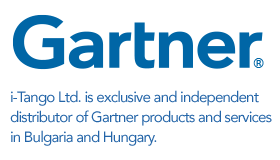Why CIOs need a cost optimization strategy that includes creating revenue-generating digital opportunities.
Contributor: Jo Bennett
If cutting costs is the first thing that comes to mind when you think about “cost optimization,” consider the example of an oil company. For successive quarters, the entire industry has suffered from a deluge of oil glut. Fortunately, the CIO took away an important lesson from the Great Recession (which began in 2007): Don’t start thinking about cost optimization only when you’re told to cut the budget.
As worldwide markets were recovering, the CIO worked with the business to make a case for investing in analytics and forward-thinking capabilities such as visualization and modeling. This has made its oil exploration efforts much more operationally efficient (which is critical in such a heavy-asset-intensive business). In challenging times, the company is already better equipped to weather the storm.
Veterans of the Great Recession are no strangers to IT cost cutting and optimization.
When the economy shows signs of sliding downward, “Simply cutting the IT budget and taking an approach of waiting until the economic environment is more favorable to make digital investments” isn’t a viable option for organizations that want to stay competitive, said Barbara Gomolski, managing vice president at Gartner. “That approach limits your ability to create revenue-generating opportunities when you probably need them the most.”
The 4% challenge
When you’re told budgets need to be cut, keep in mind that “IT costsrepresent only a small fraction — 4% — of business costs,” said Ms. Gomolski. “Cost optimization in the age of digital business means looking beyond IT and including business costs in the initiative,” she stressed.
Your cost optimization strategy should be holistic, and include three different types of activities, explained Kurt Potter, vice president and distinguished analyst at Gartner:
- IT cost optimization: Reduce IT costs while maximizing business value
- Business cost optimization: Use IT to digitalize and optimize business processes
- Digital business: Prepare for a digital future by digitalizing physical assets, data and business processes
The cycle of cost cutting
Some economic indicators might seem uncomfortably familiar for IT leaders who weathered the Great Recession. For example, noted Ken McGee, vice president and Gartner Fellow, the Dow Jones Industrial Average, Financial Times Stock Exchange 100 Index and Shanghai Stock Exchange Composite Index were in decline prior to both 2008 and 2016.
Veterans of the Great Recession are no strangers to IT cost cutting and optimization. Since then, many CIOs have squeezed out excess IT capacity to make their organizations vastly more efficient, to the point where IT budgets are incredibly lean. Mr. Potter noted, “The average change in CIOs’ year-over-year budgets for the five-year periods leading up to 2008 and 2016 were 2% and 0.004%, respectively.”
Now, CIOs need to be proactive about helping the rest of the organization reduce costs. Business operations and non-differentiating activities are good starting points. Also consider how IT capabilities, such as bimodal, can be applied in other parts of the organization to help them operate more efficiently.
This is a value proposition that excites CEOs and boards of directors.
Ultimately, using more information technology (as in the example of the oil company), rather than simply focusing on ways to trim the budget, will be your best strategy to help the business run more efficiently.
CIOs as optimization advisors
The good news is that your business needs technology more than ever. Technology isn’t about just keeping the operational lights on anymore — it’s often about staking out new ways to generate revenue by attracting and keeping customers. To grow and transform — in sum, to remain competitive — the business needs to have a digital optimization strategy. This is a value proposition that excites CEOs and boards of directors.
“CIOs should adopt the role of technology advisors and counselors, and recommend to CEOs and boards of directors that they spare revenue-creating systems from the proverbial axe,” said Mr. McGee, “because this time, things are different.”
Gartner clients can read more in the reports, Cost Optimization in the Age of Digital Business and Cost Optimization Perspectives: 2008 Versus 2016; What’s Different Now?
Watch the webinar, Cost Optimization in the Age of Digital Business with Barb Gomolski.
Cost optimization strategies will be further discussed at the Gartner IT Operations Strategies & Solutions Summit taking place May 10 – 12 in National Harbor, Maryland, and at the Gartner IT Infrastructure & Operations Management Summit, June 14 –15 in Berlin. Follow news and updates from these events on Twitter using #GartnerIOM.
The topic will also be discussed at the Gartner Infrastructure, Operations & Data Center Summit in London. Follow news and updates from these events on Twitter using #GartnerDC.
For more visit Smarter With Gartner website.










